Crassula "The Hobbit": description, care and reproduction
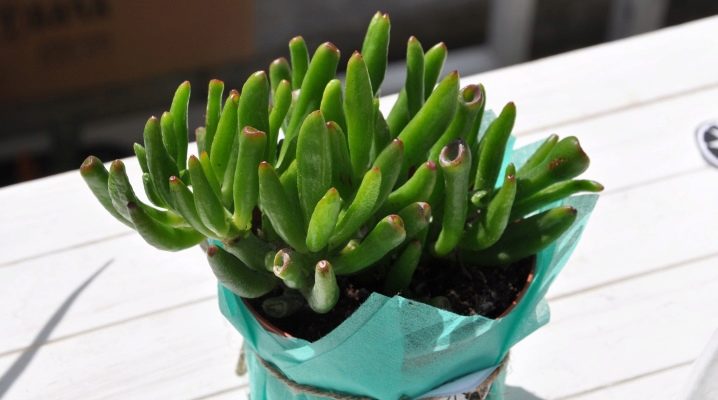
Crassula "The Hobbit" was first presented by breeders in the middle of the last century, when R. Tolkien's famous work "The Lord of the Rings" was published. The plant received its unusual name in honor of the heroes of this book. Another name for the flower is "Shrek's ears". The plant is popularly called this because its thick leaves resemble the ears of the cartoon character of the same name.
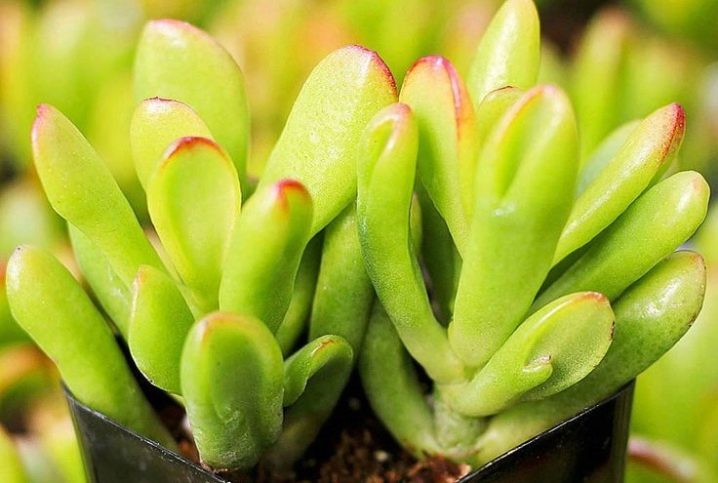
Description
Crassula belongs to the plants of the bastard family. This is a fairly diverse species, which has about 300 varieties. Crassula "The Hobbit" is considered one of the most popular.
The plant is compact and has an average growth rate. Without crown molding, it rather resembles a bonsai, therefore it is often used as part of decorative compositions of several succulents. The leaves attract the attention of those around them with their shape and shade. The color of the leaves is rich, emerald green, often a reddish tint appears at the tips. With prolonged exposure to the sun, the coloring of the leaf plates on the back becomes crimson.
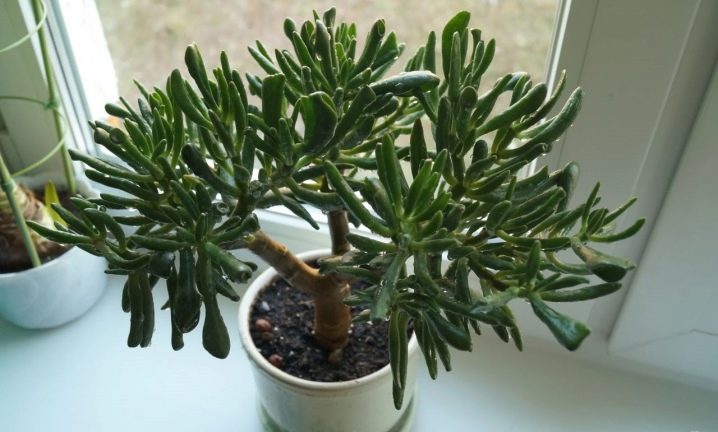
Blooming at home is quite rare., but if you create a comfortable habitat for Crassula, then even the oldest perennials can please with pink and white miniature flowers collected in inflorescences.
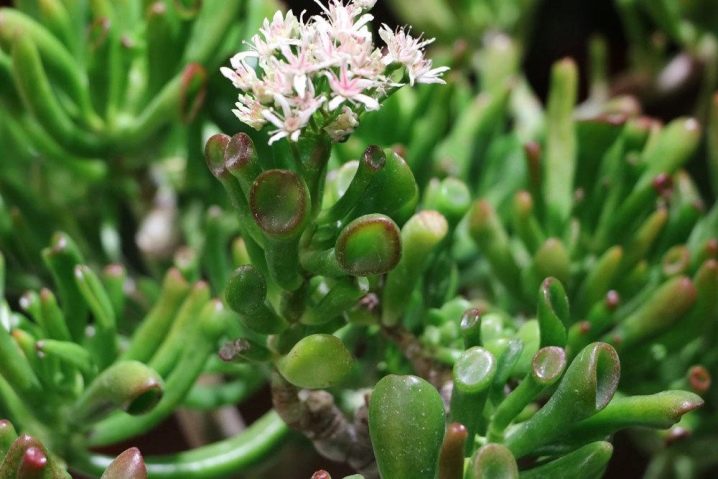
At home, the culture lives for a rather long time - more than 20 years.
Landing
When planting Crassula "Hobbit", special attention should be paid to the preparation of the substrate and the choice of the pot. You can pick up the soil mixture at the store. It is better to dwell on the composition intended for cacti and succulents. However, you can make the substrate yourself from the available components. You need to take:
- 1 part of sheet soil;
- 1 part river sand;
- 1 part turf.

All components can be assembled in an environmentally friendly location away from major roads and highways. It is also necessary to add a little crushed coal, zeolite and fine-grained expanded clay to the prepared mixture. All components must first be calcined on a baking sheet in the oven. - this will destroy the larvae of insect pests, as well as pathogens of fungal, viral and bacterial infections.
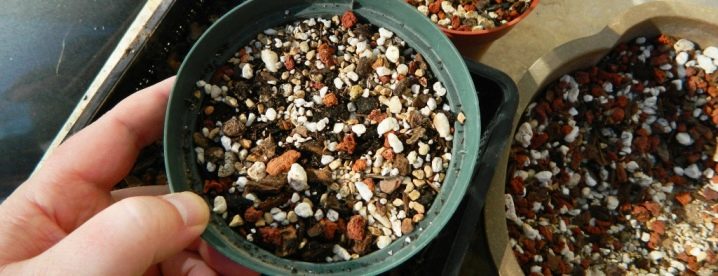
Drainage must be placed on the bottom of the container; it must occupy at least a third of the pot. Usually use pebbles or expanded clay... This is very important, since stagnant water leads to waterlogging of the soil, and this has the most detrimental effect on the condition of the root system and leads to the shedding of leaves.

The root system of Crassula is superficial, so it is better to choose a low, but wide and flat pot for the plant. It is in such a container that the fat woman will be as comfortable as possible. The diameter of the pot should be roughly the size of the crown. If it is less, then the roots will be cramped. If you take a larger pot, the Crassula will grow and develop very slowly.
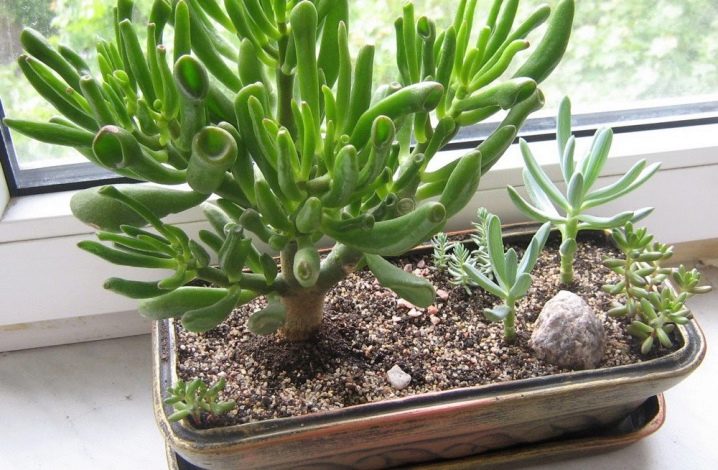
Keep in mind that the mature plant is quite heavy. The pot must be stable to support the overgrown tree.
The container can be made of any material, but since the flower looks very impressive and resembles a bonsai, it will look best in a ceramic or clay container. If you wish, you can even pick up a special bonsai.Also, there is one important requirement for crassula pots - they must have several drainage holes to remove excess moisture from the substrate.
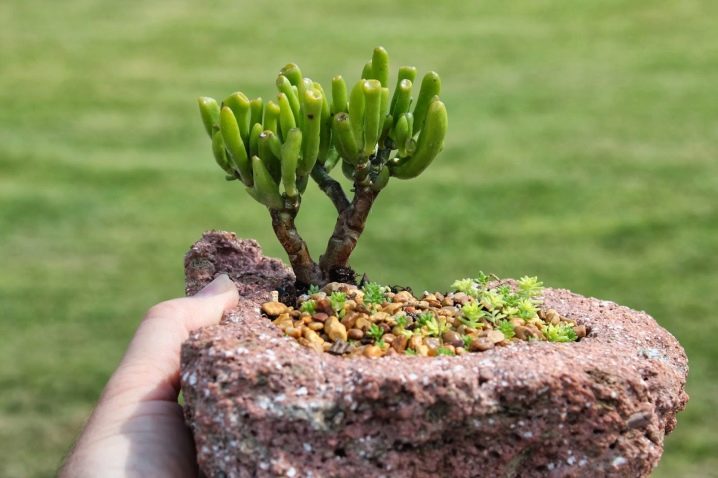
Care
When creating optimal conditions, Crassula will delight its owners for many years. The plant is very demanding for good lighting... The best place for it is the south or southwest window. In a shaded place, a succulent will also fully develop and grow if you put it in a well-lit place for a couple of hours a day.
However, be aware that with prolonged stay in the shade at Crassula "Hobbit" begin to stretch, and then fall off the leaves. In addition, the flower becomes faded and completely loses its decorative effect. In this case, it will be quite difficult to restore the appearance of the plant.
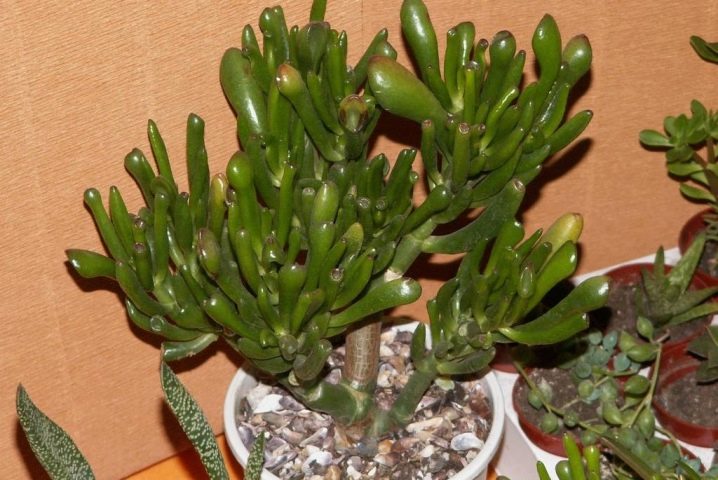
The optimum temperature for Crassula, as for all other fat women, is considered to be a background in the range of 20-25 degrees. In summer, the flower can be taken out to the balcony, terrace or veranda. In winter (during the rest period), the heating can be reduced to 10-15 degrees. In winter, the plant needs coolness, only in this case it will be able to give full bloom in spring or summer.

If there is no cold period, then you should not wait for the appearance of buds, such a plant will only increase the green mass.
Succulents, to which Crassula "The Hobbit" belongs, steadfastly tolerate short temperature fluctuations. They are able to withstand both sharp drops and rises, because this often happens in their natural habitat. The artificially bred varieties inherited this useful quality from their ancestors.
The humidity of the room has practically no significance for the culture. It tolerates well both the dried air of the apartments of the metropolis and the hot heat in the summer. However, a periodic warm shower will not harm a green pet - from this, the leaves will restore a glossy shine and bright color.
After the procedure, you need to gently shake the flower pot so that all drops of water roll off the leaf plates. The plant must dry out in the room. If you expose it to the sun, then water can cause burns on the surface of the leaves.
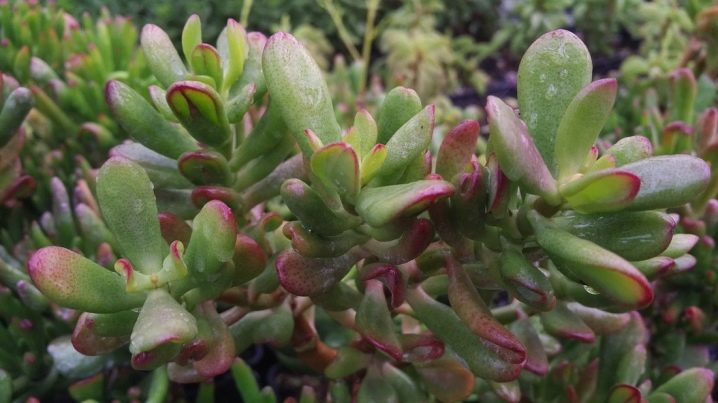
Pruning
If you intend to form a beautiful, spectacular crown, special attention should be paid to pruning... If you want to get a thickened trunk, then you need to trim the side shoots quite early. To give the crown the desired shape, the shoots should be regularly pinched and sifted out with a clean, almost sterile pruning shears. Places of cuts after the procedure should be sprinkled with activated charcoal.
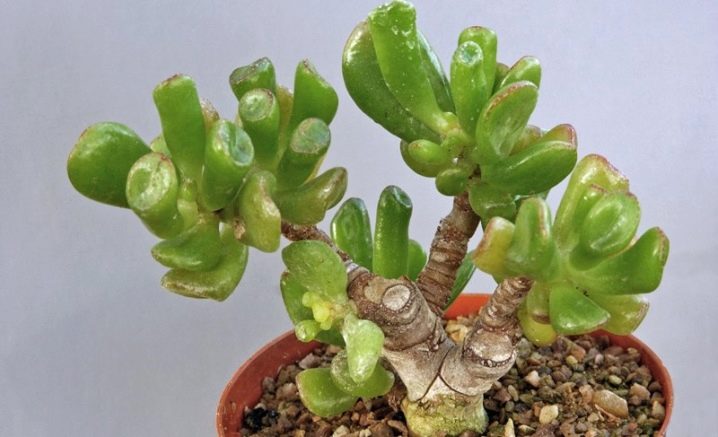
You can even shape the crassula in a fantasy style, especially if you are growing the plant as part of a composition or as part of a mini-garden.
Watering
From October to the first ten days of March, it is not often necessary to water the Hobbit Crassula. This plant is native to desert and semi-desert areas, therefore it goes through a temporary drought quite easily... Succulents accumulate moisture reserves in the leaves, therefore, even if the plant for some reason is forgotten to water, it remains alive, although the elasticity of the leaves and loses.
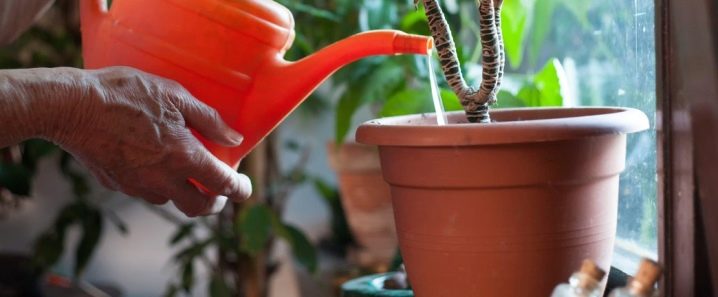
During the period of active growth (in the warm season), it is necessary to water the green pet more often - once every 10-14 days, as the earthen coma dries out. The top layer of the substrate should dry by about 50%. If during this time the soil does not dry out, then the drainage should be checked: it is probably clogged and has ceased to allow excess moisture to pass through.
If high humidity is constantly maintained in the pot, then there will be a risk of damage to the jellyfish by fungal rot or mold. This can kill the plant in no time. For watering, you must use soft, settled water at room temperature. However, spring or filtered water may also work.

Transfer
From time to time Crassula "Hobbit" needs to be transplanted. Young plants are transplanted every year... The pot for each subsequent transplant should be 1-2 cm wider than the previous one. Adult plants are transplanted every three years, and only the earthen substrate requires replacement, the pot can be left the same. When transplanting, you should inspect the root system as carefully as possible, remove damaged roots and cut off too long, remembering to sprinkle the cuts with crushed coal.
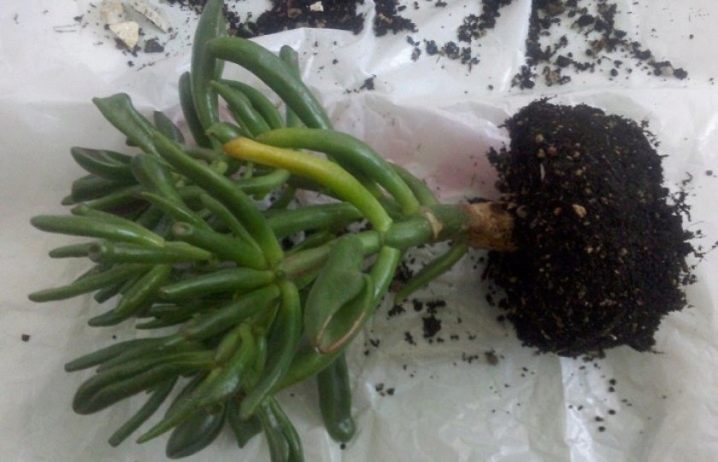
Fertilizer
Any fat women need feeding. As a fertilizer, you can use ready-made store preparations created specifically for cacti and succulents. During the period of active growth (in summer, spring and autumn), fertilizing should be carried out twice a month, in winter they should be reduced or even removed altogether.

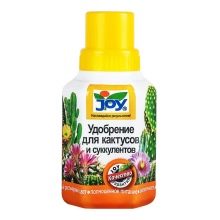
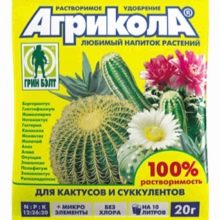
Other nuances
In case of violation of the rules of plant care some problems may appear.
- If the leaves remain soft even after watering, this directly indicates an excess of moisture. In this case, you should remove the crassula from the ground, cut off all rotten roots and rinse them under running water. Then the plant is transplanted into a new pot filled with fresh soil mixture and fertilized with carbendazim, after which it is left in a well-lit place and watered only after recovery. Please note that the light should be bright, but diffused.
- Twice a year of the fat woman change their foliage, so leaf fall can be caused by natural processes. If it is delayed, then, most likely, the plant does not have enough watering or it is moistened with too cold water.
- Cessation of flower growth can be associated with an attack by pests, but most often this happens when a crop is planted in a pot that is too small and narrow.
- Frequent falling trees occurs due to an incorrectly selected container. In this case, the root system cannot be located normally. To avoid injury to the plant, a heavy pot should be selected for it.
- The appearance of brown spots on leaf plates - a clear sign of a fungal infection. In this case, drastic measures are required with the use of fungicidal preparations.
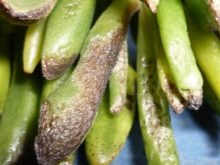
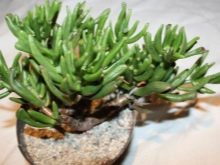
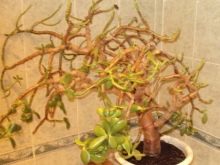
Reproduction
Crassula "The Hobbit" can be propagated in a variety of ways: leaf, cuttings, dividing the bush, as well as aerial roots... The seed method is often used, but this is a rather complex and lengthy process. The fact is that Crassula "The Hobbit" blooms quite rarely at home, so getting its seeds is not easy. However, they can be purchased at any specialty store.
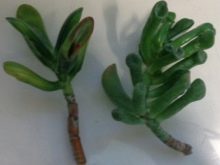


The seeds are laid out on wet ground, lightly sprinkled with earth, covered with glass or plastic wrap (this is necessary in order to create a greenhouse effect). As soon as the seedlings appear, they should be transplanted into separate small pots.

The easiest way to reproduce is by cuttings. To do this, cut cuttings 8-10 cm in size from the branches, rinse them under running water until the release of juice stops, slightly dry them in natural conditions, remove the lower leaves and place them in a vessel with water, preferably adding a tablet of activated carbon there ( this will prevent decay). As soon as the roots appear, the shoot can be transplanted into a container with soil for further rooting.
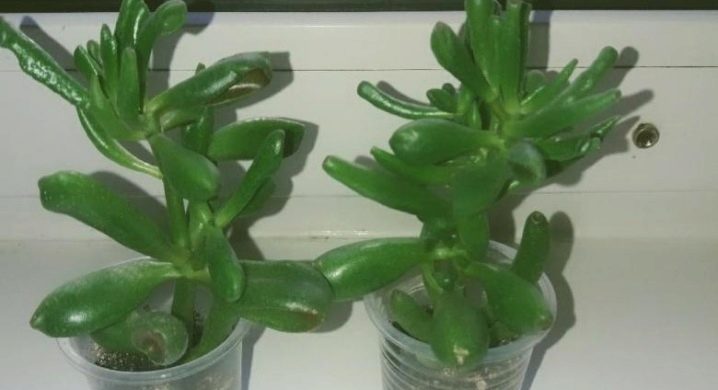
Often, leaves that have fallen from Crassula root themselves and give new shoots. However, in this case, the formation of a new plant is much slower than when using cuttings.
Diseases and pests
The Hobbit fat woman is resistant to diseases, and pests very rarely infect this plant. Nevertheless, one cannot be 100% insured against troubles.
Of the pests, the spider mite is considered the main enemy of fat women. It feeds on the vital sap of the plant, which leads to its wilting. In addition, this parasite often becomes a carrier of fungal infections, such as gray rot.In this case, measures to resuscitate the flower should be taken as quickly as possible.

Another insect that Crassula can encounter is mealybug. You can identify it by the sticky wadded trail that it leaves behind on the sheet plates.
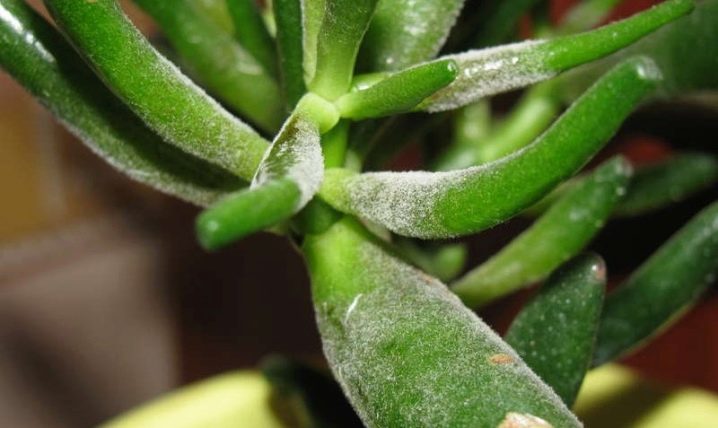
To get rid of insects, you need to treat the leaves and stems with a solution of laundry soap until all aggressors are completely eliminated. If these measures are ineffective, then insecticidal solutions should be used.
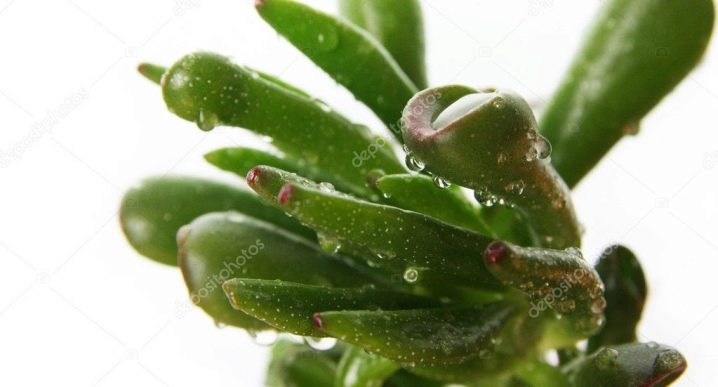
The most effective are Aktellik and Fitoverm.

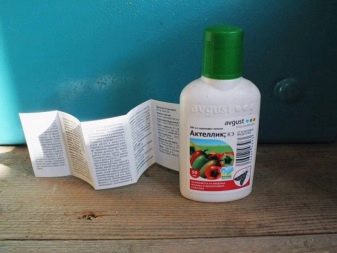
See the video below about grafting Crassula "The Hobbit".























































The comment was sent successfully.